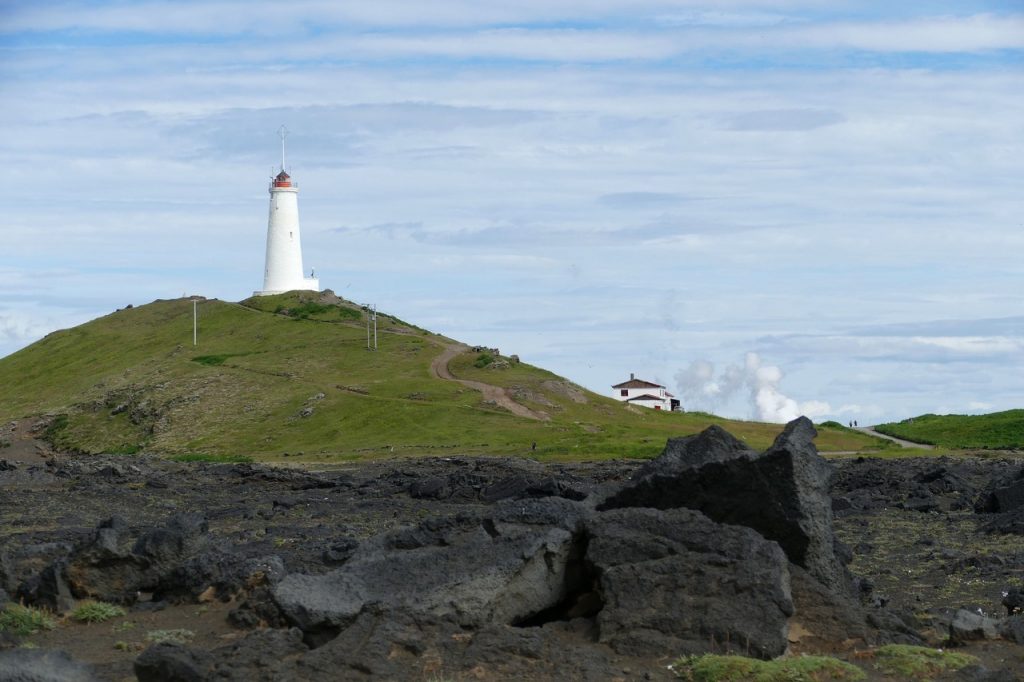
The Reykjanes Peninsula is one the most fascinating yet underrated parts of Iceland. It’s located between two continents in a drift zone. The two continents are the Eurasian plate and the North American plate. There are many different natural elements going on in one place, making it great for nature lovers, scientists and geography enthusiasts.
Of course, the region is still around 1000 square kilometers. Car rental in Iceland
is advised because you will want to see these different sites — and the
unpredicted sites between journeys — on your own terms. Tours are great
once you’re there, but considering there’s a lot to see, you may want
the freedom to create your own itinerary.
4×4 cars are also advised. This is mostly for the gravel, bumpy roads that you will inevitably have to drive across. However, 4×4 cars
are an absolute prerequisite if you’re planning on driving on the
f-roads in the summer. Insurance simply won’t cover you, otherwise.
Another popular choice though is camper rental.
These are great if you want to save money on accommodation costs.
Regardless, your time seeing the Reykjanes Peninsula will be life
changing, regardless of how you choose to navigate it.
The Blue Lagoon
The Blue Lagoon may well be the most
popular and famous landmark in Iceland. The Blue Lagoon is like
something out of a movie — it’s hard to believe it’s a natural
phenomenon. The Blue Lagoon is geothermal water — water that has been
naturally heated up due to the earth below it — in which steam magically
rises around the entity as if it’s artificial. The water is neon blue
and the volcanic rocks are dark. The water is around 38 degrees celsius —
much warmer than a natural swimming pool. This is a particularly crazy
experience when it’s winter and freezing cold outside of the water.
The Icelandic Museum of Rock ‘n’ Roll
Keflavík is known for hosting some of
the most popular bands for decades. For this reason, it’s even nicknamed
the Beatles Town. It comes then as no surprise that this is where the
Icelandic Museum of Rock ‘n’ Roll is situated. This museum is presented
in an unusual fashion, and features the whole history of Icelandic rock
and popular music. This is great for both art and music enthusiasts.
Básendar
Básendar was a once prosperous, small
hamlet. It was a trading post that was swept away in a matter of hours.
What decimated it was a tidal flood back in 1799. You can visit the
ruins of Básendar, and it can be a fascinating yet heartbreaking
experience. In fact, it wasn’t just Básendar alone — all along the south
coast had been hit by the storm. Ships, churches, farmsteads and
harbours were ruined and left in pieces. Whilst Básendar has never been
inhabited since, you can feel the eery difference between what it is
now, and when it was a busy fishing village that served as an
international fishing port.
Gunnuhver geothermal area
Gunnuhver is a geothermal area that is
great fun to visit when in the Reykjanes Peninsula. Here lies boiling
water, steam and bubbling mud pools. The name of the area is named after
an old fabal around a ghost who was captured and trapped in the pool by
a priest over 4 centuries ago. Gunnuhver has the largest mud pool in
Iceland, which is around 20 meters wide, under which it boils profusely.
Bridge between two continents
The mid Atlantic ridge can be found in
the Reykjanes Peninsula. The continental drift theory states that these
two tectonic plates — North America and Eurasia — are constantly
drifting apart with huge forces. You can literally walk in between the
two continents, in which the tectonic plates are extremely visible with
sharp drops on either side. Crossing this divide is a special moment,
and it’s something you can’t really find anywhere else in the world.
Iceland’s oldest lighthouse
The peninsula is also home to Iceland’s oldest lighthouse — Reykjanesviti lighthouse. This is an iconic structure which stands incredibly proudly on the top of a hill. Not to mention that it’s cinematic image is caused by the steam from geothermal waters below it. The lighthouse was built in 1878, though it got severely damaged almost a decade later by a large and disruptive earthquake. The foundation was restored in 1907 to make it safer, and it’s now known as a different lighthouse.
Reykjanes Nature Reserve
The Reykjanes Nature Reserve is certainly worth visiting. Being around 300 square kilometers, the reserve is one of the largest in the country. The reserve has the Kleifarvatn lake, which is exceptionally unspoiled and well preserved. The reserve is very hill-intensive, making it a challenge to hike around. You’re rewarded with incredible views and nature. There are hot springs, over 50,000 sea birds, walking trails, ponds, lakes and large hills to see such views from.
